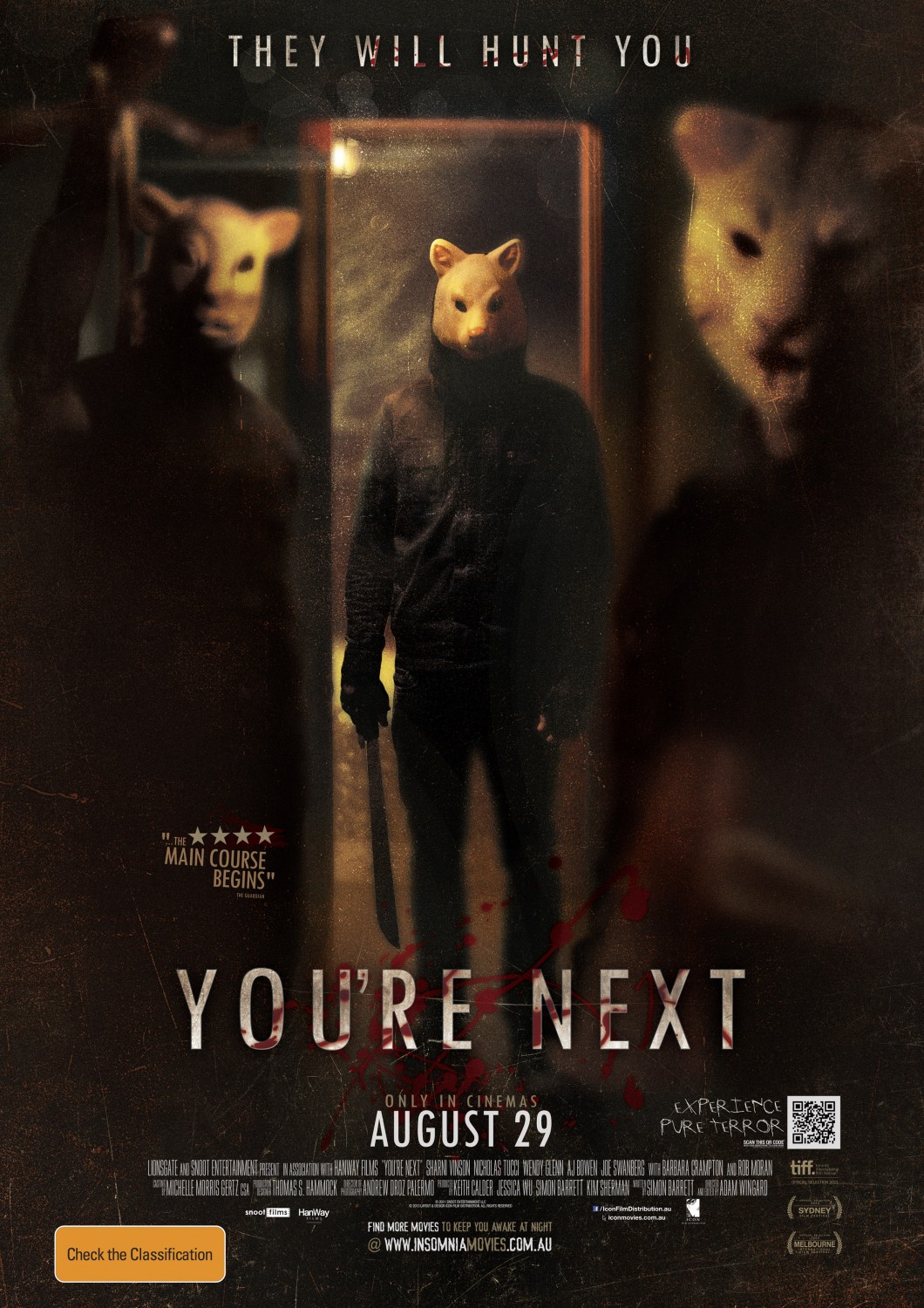SYNOPSIS
You’re Next is a black comedy set in an isolated location in Missouri. The plot is similar to Agatha Christie’s Ten Little Indians (1965), the film adaptation of which focuses on ten people invited to a remote location by a mysterious stranger (with Christie’s isolated snowy mountain exchanged for an a cabin estate in the woods). The movies’ shared plots revolve around a series of murders from an unknown assailant(s). You’re Next demonstrates uber-dysfunctional family dynamics from its earliest scene to disclosure of the mystery assailants.
THE PSYCHIATRY OF YOU’RE NEXT
The movie begins with 2 murders at a neighboring estate by unknown assailants while “Looking for the Magic” plays in the background (Dwight Twilley Band). After witnessing the cold blooded murders, we meet the Davisons as each member arrives at a family reunion at their Missouri vacation house. The cold, uneasy interaction of the siblings continues around the dinner table when discord erupts, serving as the prelude to the first kill when Aimee’s (youngest sibling) boyfriend, Tariq, is struck by an arrow. In an attempt to secure safety, Aimee regresses, “You never give me any credit for anything…you don’t believe in me,” and convinces her family that “she’s the fastest” who can reach the car and go for help. Her escape attempt ends in her running into a garrote wire outside of the front door.
With 2 “loved ones” dead, the rest of the party must band together to protect themselves from the assassins cloaked in sheep, tiger, and lamb masks. The doll-faced killers’ sinister motives are strangely balanced by the abnormal behavior of those they hunt as evidenced by Zee intimately telling Felix, “I wanna f* you on this bed next to your dead mom.” The universal fear of masked faces, depicted as “doll’ in Joss Whedon’s Cabin in the how to view private instagram profiles without following no survey Woods (2012), is symbolic of the hidden agenda of “the protagonists.” The specific phobia of dolls, formerly known as pediophobia, is a universal experience that likely has its roots in childhood animism. Jean Piaget posited that a child’s cognitive inability to distinguish the external from the internal world results from animism. While it’s developmentally appropriate for a child at the pre-operational stage (2-7 years) of cognitive development to believe her doll is angry, such would not be the case for the Davison children. Yet, adults universally retain memories of “their maleficent dolls,” which is why movies such as You’re Next resonate with our most primitive archetypal fears.
Crispian’s girlfriend, Erin is identified as having been raised on a survivalist compound, and becomes the leader of the hunted. Her heroics however come at a price, reminding us that even the most peerless women and men who serve and protect are at risk for post-traumatic stress. One of the more defining scenes -“Death by Blender” – exemplifies this [Spoiler Alert] when Erin demonstrates flat and isolated affect when she reveals to Crispian that she killed Felix, “I stuck a blender in his head and killed him.”
Last week’s movie: Halloween (1978)
Next week’s movie: Near Dark (1987)
